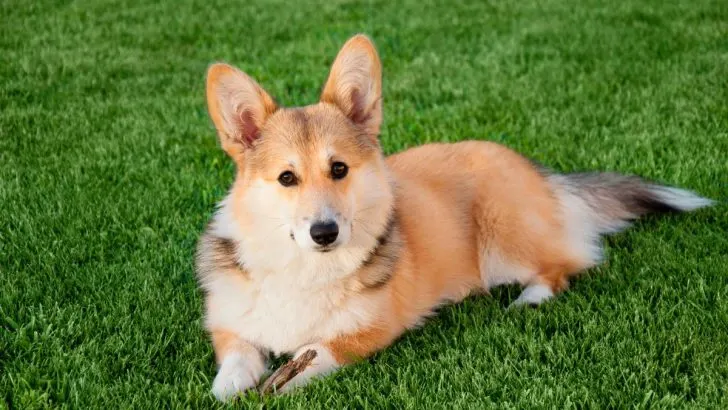The Pembroke Welsh Corgi, also known just as the Corgi, is a small and sturdy dog with a long body and short legs. They originate from Wales and are bred to herd cattle and sheep.
This breed is well known for its friendly and playful personality. Corgis make excellent family pets.
When talking about the temperament of this adorable dog, they are world-known as affectionate and friendly. They are also quite intelligent, playful, outgoing, and loyal.
Corgis are known for herding instincts and may try to herd people or other animals. They are also known for their bark, often described as “yodel-like.”
The Pembroke Corgi that we are talking about today is the smallest of the two Corgi breeds, the other being the Cardigan Welsh Corgi.
When considering a Corgi dog, it’s advisable to prioritize adopting rescue organizations or shelters to provide a loving home to a needy dog.
However, choosing a reputable breeder is crucial if you plan to purchase them.
Please conduct thorough research and take your time to ensure that the experienced breeder you found follows all the critical ethical practices and prioritizes the well-being of their pups.
Reputable Corgi breeders conduct necessary health screenings and provide a nurturing environment for the Corgi puppies. This active approach ensures you bring home a healthy and happy pup.
Quick Corgi Facts
- The males are 10 to 12 inches tall from the shoulder and weigh from 25 to 30 pounds, while the females stand 9 to 11 inches tall and weigh from 20 to 25 pounds
- The Corgi belongs to the herding dog group
- The Lifespan of this breed is from 12 to 13 years
- The Corgi breed has a dense, double coat that comes in 5 standard, basic colors
- Training a Corgi can be easy, but they can be stubborn
- They don’t need regular grooming once a week
- But when talking about health problems, they are pretty prone to hip dysplasia (not just a big dog problem), as well as elbow dysplasia and eye problems
- The name “Corgi” comes from the Welsh words “cor” (dwarf) and “gi” (dog).
- Queen Elizabeth II loved Corgis and owned more than 30 of them. She got her first in 1944. The Queen often took her dog with her on official engagements, and the two were usually seen together in public. The Queen’s Corgis were so popular that they even had their line of merchandise, including toys, clothes, and food.
- There are some interesting Corgi mixes gaining popularity in the US
Breed Standard Welsh Corgi Pembroke Colors
Now, the part we have all been waiting for, let’s have a closer look at the different Corgi coat colors and patterns as well as the significant role of the genetic factors behind them.
1. The Fawn Corgi
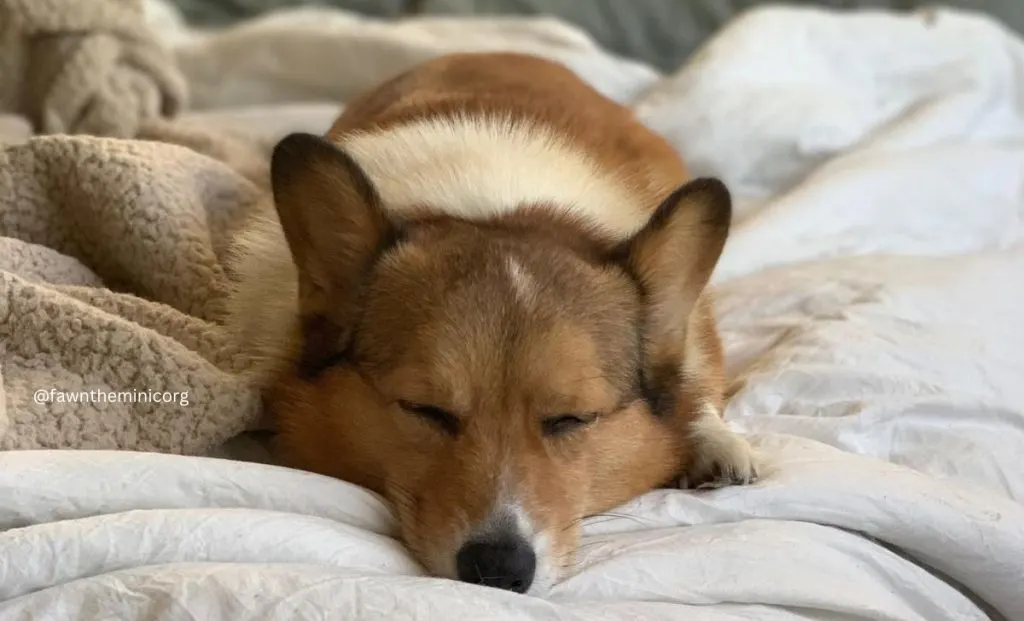
Fawn is one of five official colors of this breed. Looking specifically at Corgi colors, fawn means a clear sable coat with a yellowish to strawberry blond or a light red phaeomelanin intensity.
The term “Fawn” in this breed mainly distinguishes the lighter-colored pups from those with darker red pigment.
A fawn Corgi can have some minimal shading in its puppy coat and look very grayish at birth. But any black-tipped hair will transform into a solid fawn shortly after birth.
Most fawn Welsh Corgis will have white markings on their fur.
2. The Red Corgi
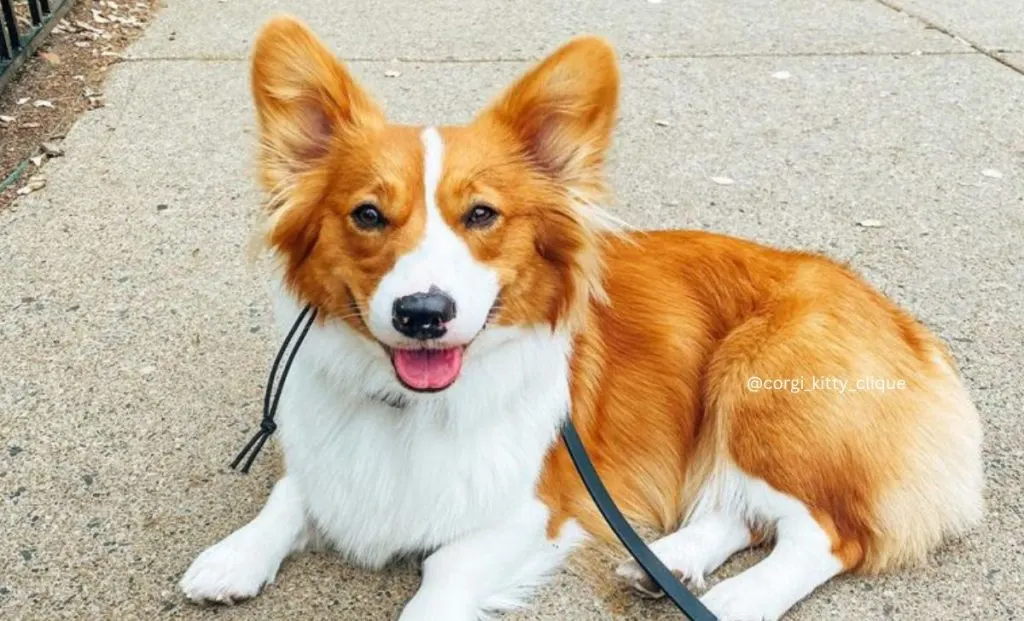
The following standard color of the breed is red.
Genetically looking, the red Pembroke Welsh Corgi is also evident. These dogs have very little to no black shading in the adult coats, but they can be born with dark puppy shading that is very noticeable but will fade with time.
A Corgi in red has the same pattern as a fawn-colored dog. But unlike the fawn variety, these Corgis have phaeomelanin that is red and comes in shades from a rich red to a deep orange fox red.
Don’t forget these dogs can come with or without white markings. Nevertheless, red and white Pembroke Welsh Corgis are the norm, and no solid red dogs exist.
3. The Sable Corgi
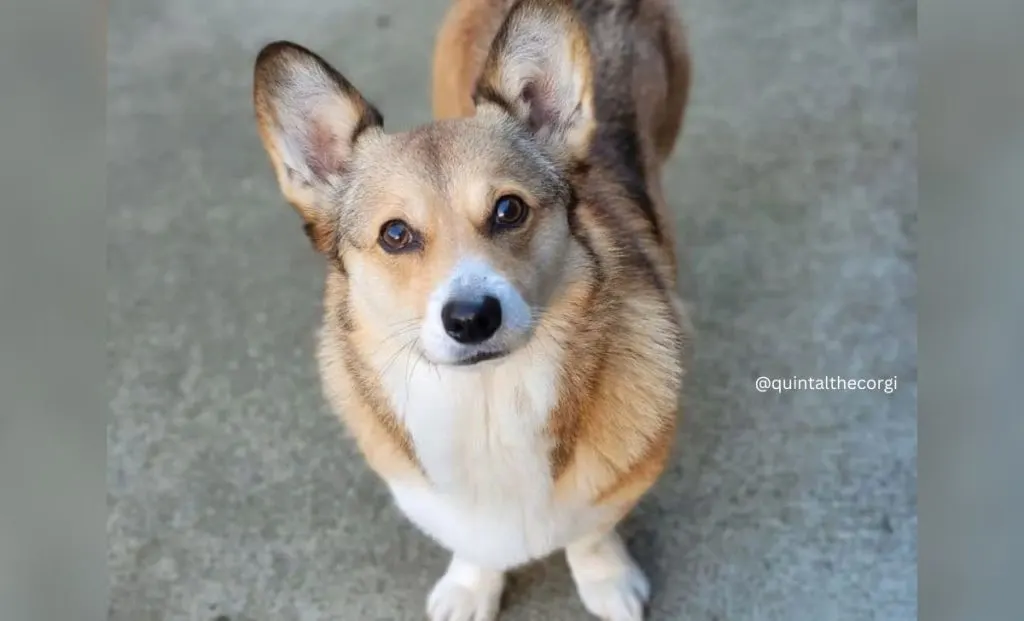
In Corgi colors, the term sable refers to any dog with a shaded sable pattern. Pups will be born with different amounts of black-tipped hair and can look very mousy initially.
They will keep some black overlay when changing into adult coats.
Typically, a sable Corgi has some black-tipped hair, mostly noticeable along the topline and tail, as well as around the ears and on the head. Together, they often form a widow’s peak on the forehead.
Corgis sometimes come with two copies of shaded sable. A sable Pembroke Welsh Corgis can carry other A-Locus patterns in this breed.
This is very important to remember since heterozygous genotypes at the A-Locus are often known to give intermediate phenotypes.
A sable Corgi can carry a saddle pattern or tan points.
It is not quite an exact science, but saddle gene carriers, more often than not, come with less head shading, while tan point carriers usually express an overall darker sable pattern with black shading.
And we can’t entirely rule out that some dogs that barely pass as sables in the Corgi breed are actually genetically clear sable but may be carriers for saddle pattern or tan points, which can re-introduce some tiny quantities of black hairs to the dog pattern.
Like all Corgi colors, the sable one has white spotting.
But unlike in fawns or other colors, Corgi color terminology does not make a difference between pigment differences in strength when it comes to the shaded sable dogs.
4. The Red-Headed Tricolor Corgi

In Corgis, “red-headed tri” refers to a saddle pattern that has white markings.
Pups are born with solid black coats and smallish tan point markings. However, the red markings get bigger until the dog has only a black saddle left.
In the end, most of the black from the puppy pattern is replaced by the red coat, and the back of the ears and head are red. Dogs with this pattern are most often called red-headed tricolor Corgis.
This pattern is only a variation in saddle-patterned Corgis that carry tan points.
This helps to create a so-called creeping tan phenotype where we can notice the red parts of the dog’s coat do not make a full saddle pattern.
Instead of that, grown adult dogs still have many black hairs on the top of their head (also called a cap) and a bigger saddle pattern than a true red-headed tri.
5. The Black-Headed Tricolor Corgi
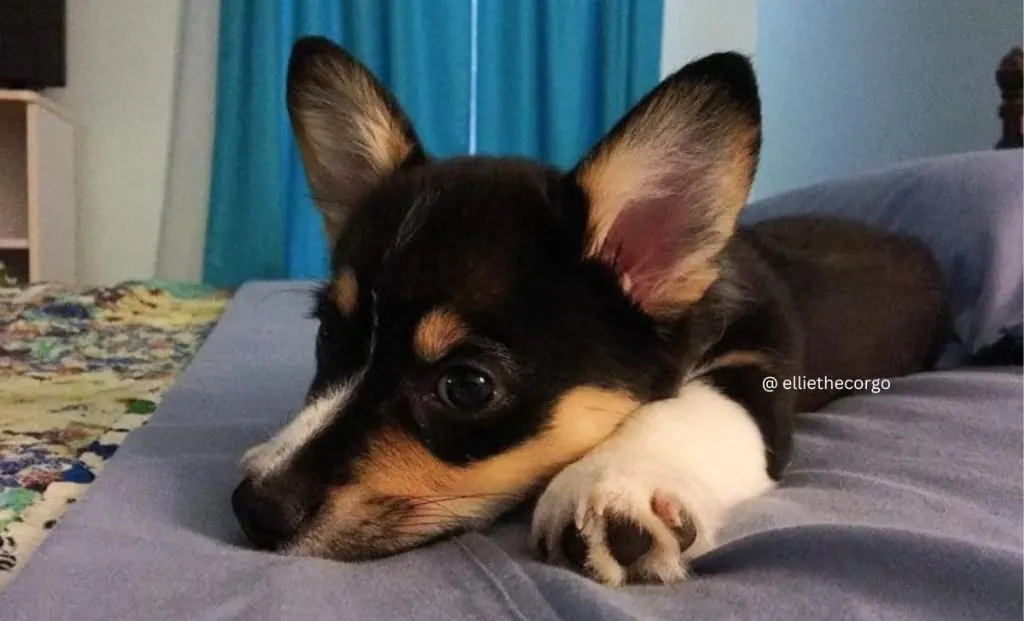
Among the recognized Pembroke Corgi colors, black & tan plus the white markings are known as the black-headed tricolor.
Puppies are born with the same pattern we can see in red-headed tri, but these dogs will keep their original markings into adulthood.
A black tricolor Pembroke Welsh Corgi dog has a traditional tan point pattern with noticeable red markings on the cheeks, on the area above the eyes, as well as on the chest, the lower legs, and under the tail.
In other words, the colors will not blend overtime on a black tricolor Welsh Pembroke Corgi. All coat’s black, red, and white sections should be clearly defined on the dog.
The Non-Standard Corgi Coat Colors
Non-standard colors are something that can happen in any dog breed that we know.
Sometimes, the non-standard colors occur by pure accident thanks to the recessive alleles.
Recessive traits can only be expressed in pups that have inherited one copy from each of the parents. However, pups with only one copy can carry and pass on these traits for generations without humans knowing.
In dogs that are purposefully color-bred, a pattern or color different from the standard is often achieved by crossbreeding and intentionally introducing a new trait.
6. The Bluie Corgi
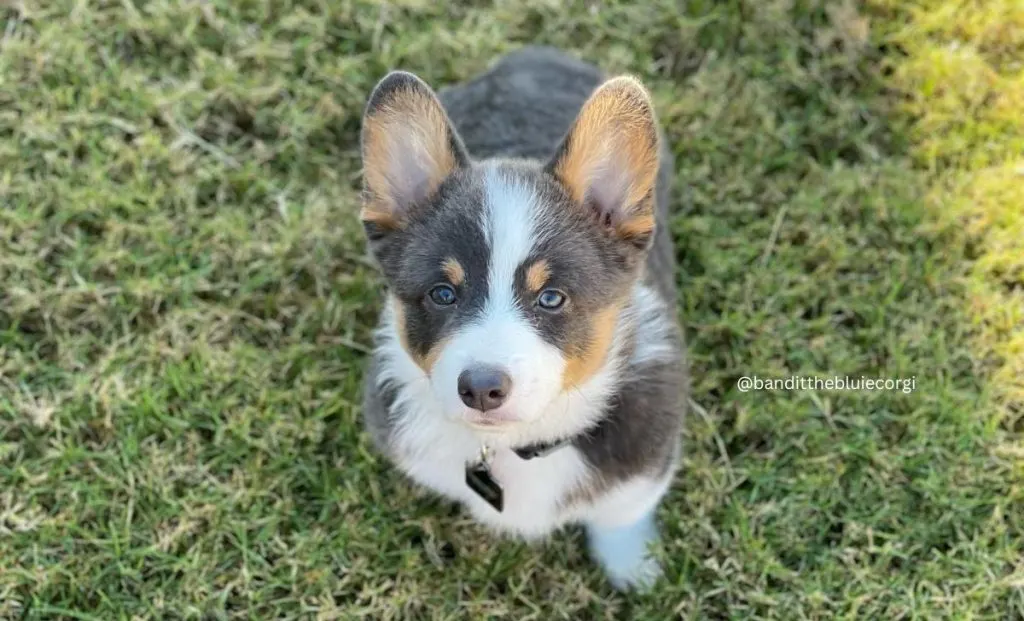
A gray Corgi that has diluted black eumelanin is often referred to as “Bluie. ” This happens when both of the parents pass on a gene variant for color dilution.
Pups with a d/d genotype make blue pigment instead of black pigment. All the usually black hair in their pattern will now be blue. This also turns a red Corgi into a “Red Bluie “or a sable one into a “Sable Bluie, “etc.
Bluie puppies will always be born gray since all the dark hair tips in the puppy shading will be blue. However, the most noticeable giveaway is the slate gray pigment on their nose, their lips, or their eye rims.
And one more trait: pups with color dilution usually have very pale puppy eyes that will later, with age, darken into a hazel color, amber, or grayish blue.
7. The Whitelie Corgi

Corgis, as a breed, usually come with symmetrical Irish spotting.
However, some individuals in the breed show what we call whitehead markings or even white spotting.
Any white marking that grows on the upper body is considered a mismark.
Too much white on the head of the dog is equally undesirable, mainly if the white color covers the ears of the pup. The same rule applies to the piebald patterns that make the Corgi mostly white with some patches of color on the body.
In the Corgi language, pups that have too much white are called “Whitelies “.
8. Black & White Corgi
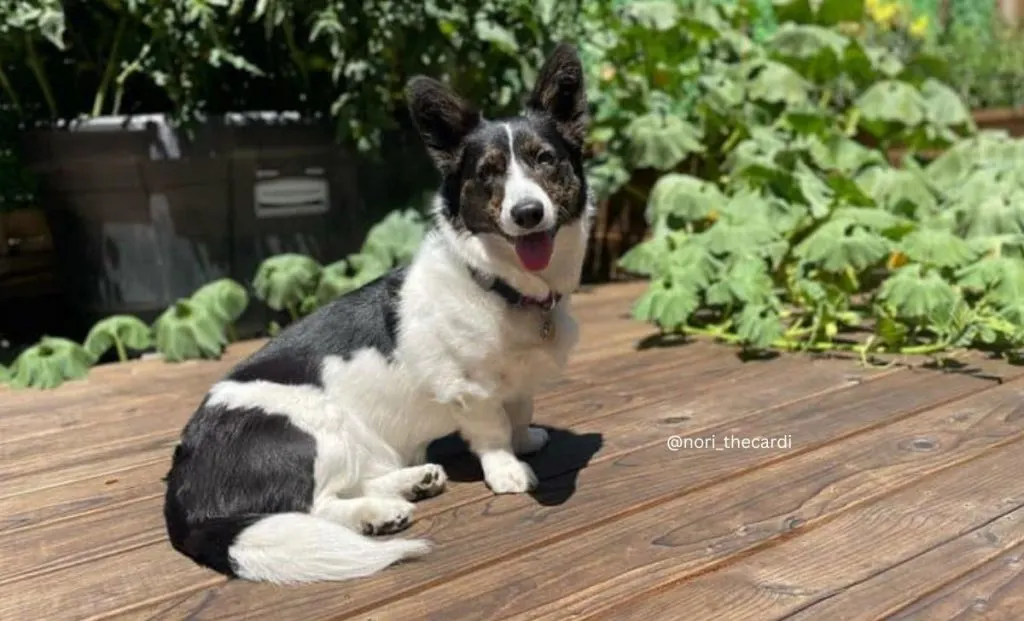
The American Kennel Club, or in short, the AKC breed standard, is particular in listing black with white markings, and no tan is present as a mismark in the Corgi breed. So, no, these dogs don’t officially come in the black & white combination.
Surprisingly, though, a 2019 scientific study found the recessive black gene in the British Pembroke Corgis, but it is scarce. (4)
9. Brown Corgi

A few British Corgi lines appear to be carriers of a recessive b allele. (4) Passed on from both of the parents, this would turn all the black pigment into a chocolate brown pigment.
10. Silver Corgi
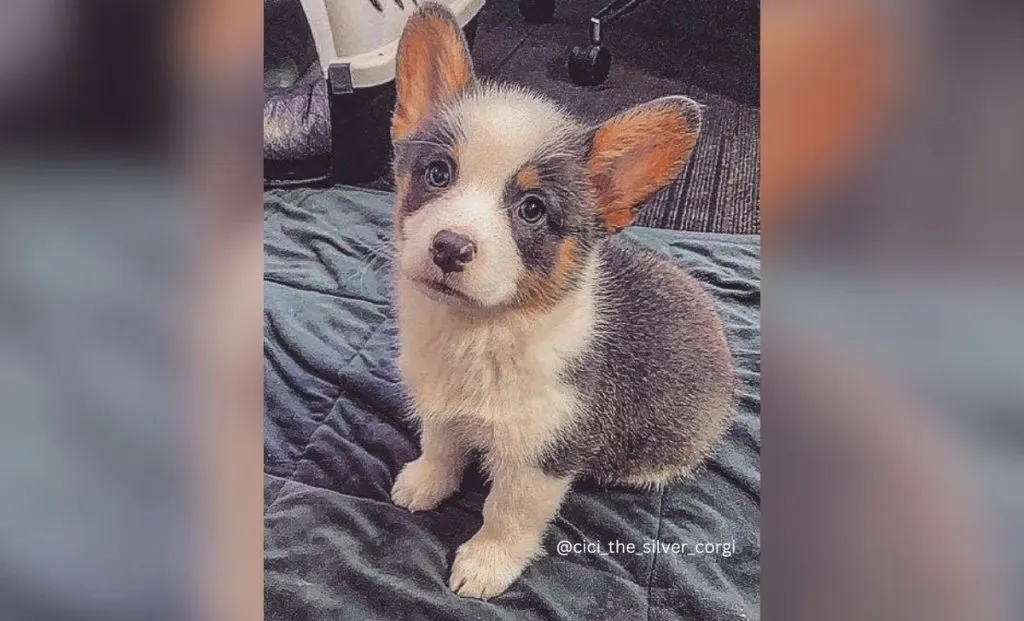
Some sable-patterned dogs born from standard fawn or red parents have light phaeomelanin that seems silverish or cream-white.
The pups still have black hair tips but a shallow contrast between their body coat and white colored markings, making them look mostly pale off-white.
This rare phenomenon is a curiosity that we notice in some Corgi lines.
11. Brindle Pembroke Welsh

Unlike the cousin breed called Cardigan Welsh Corgi, this breed we are talking about today does not come in brindle.
12. Blue Merle Corgi
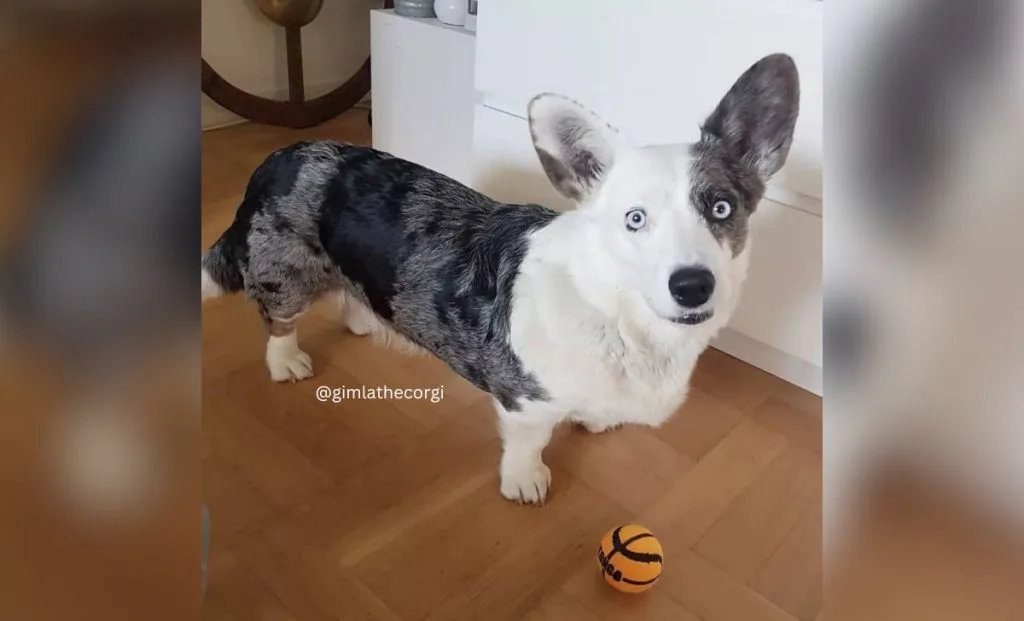
There is no such thing as blue merle Corgi.
Merle is not a recognized pattern in the Corgi breed.
As a non-standard color, blue merle Corgis are mostly backyard-bred or poorly bred from Cardigan Welsh Corgis or other merle crosses.
Pembroke Welsh Corgi Coat Colors Overview
The breed standard describes all the traits a genuine Pembroke Welsh Corgi should have.
This includes the conformation and temperament of an ideal breed representative, as well as the coat texture and color.
The major kennel clubs often use the standards supplied by their affiliated breed club. The standards are usually identical in the general outline but differ in details, like coat color. (1, 2, 3)
Corgi Nose and Eye Color
All standard Corgi dogs have black eumelanin.
So, no matter the coat color pattern, Corgis should continually have brown eyes, with a black nose, and black pigment on the lips, eye rims, as well as the paw pads, or nails.
In bluie Pembroke Welsh Corgis, all eumelanin is blue, thanks to color dilution on the D-Locus.
This makes the skin and nose pigment in the dog to be blue, while the eyes are pale greenish, amber, or hazel.
Corgi Coat Types
All Corgis are genetically short-haired dogs that have a thick double coat.
Other Coat Types in Corgis
A significant number of Pembroke Welsh Corgis carry the recessive gene for long coats. (4)
Pairing two dogs that Are carriers can produce a non-standard long-haired “Fluffy” coat with many ear and leg feathering.
References
(1) American Kennel Club (AKC): Official Standard of the Pembroke Welsh Corgi (pdf)
(2) Fédération Cynologique Internationale (FCI): Welsh Corgi Pembroke Breed Standard (pdf)
(3) The Kennel Club (KC): Pembroke Welsh Corgi Breed Standard
(4) Dreger, Dayna L., et al. “True Colors: Commercially-Acquired Morphological Genotypes Reveal Hidden Allele Variation among Dog Breeds, Informing Both Trait Ancestry and Breed Potential.” PLOS ONE, vol. 14, no. 10, 28 Oct. 2019, p. e0223995, https://doi.org/10.1371/journal.pone.0223995.

Nandina has been a lifelong dog owner and enthusiast. She shared her home with multiple breeds, including Giant Schnauzers, Cane Corsos, and Huskies. Currently, she is raising a three-year-old rescue and a working-line German Shepherd puppy.
Actively engaged in IGP dog sports for two years, Nandina is a certified instructor for basic obedience and socialization. She works as a trainer in her local dog sports club, and in her spare time, she handicrafts biothane gear for dogs.
